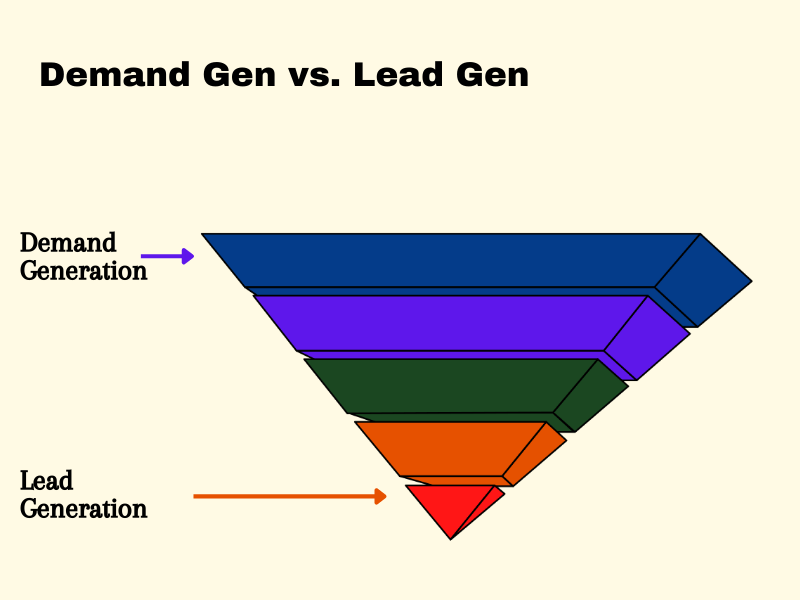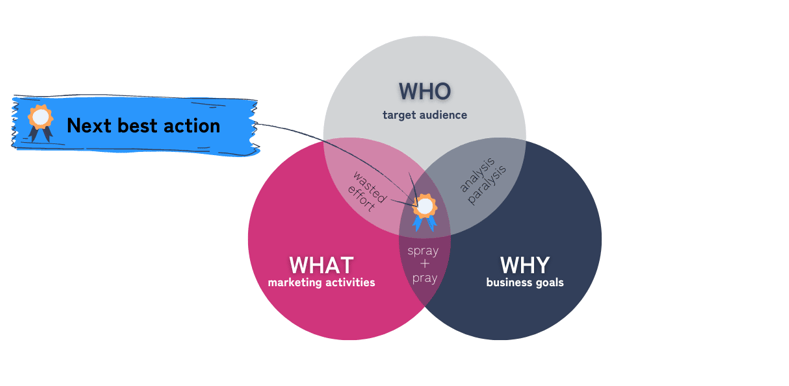How to Create the Perfect Demand Generation Plan

Ever wondered why some goods are selling less than you would want them to? There’s only one solution to that. You need to create a compelling roadmap to increase the demand for your products.
However, creating an efficient Demand Generation plan can be tricky. But if you can identify your client’s needs, you’re halfway there. Generally, the demand for goods increases if these services proffer solutions to your intended market’s problems. We will examine the steps to create the perfect plan to skyrocket your revenue.
What is Demand Generation?
This tactic brings the client’s needs and the available offers and deals to create a balance that would result in maximum sales. It searches for the issues your deals and offers can fix and raises awareness.
This way, prospective clients who need these products get to know that such items exist, and this invariably builds trust and confidence in the intended market.
This tactic comprises various approaches, like running campaigns on media such as Instagram, Twitter, Whatsapp, Facebook, and LinkedIn. The most crucial goal is ensuring clients know your brand well enough to choose it over other brands.
For this tactic to work, ask these vital questions.
- What pressing needs do my prospective clients have?
- What is my solution to these needs?
- What does my brand represent?
- What does my brand offer?
- How can these products and services meet the needs of prospective buyers?
- Are the prospective customers aware that my goods and services exist?
- Can prospective buyers trust my brand?
- How can these prospective buyers be converted into clients?
Identifying the answers to the above questions provides the proper perspective and tells you what component of your brand needs work.
Demand Generation Vs Lead Generation
People often believe these two methods are the same, and we must take note of the subtle differences between them.
The former focuses on the products or services the brand offers. Therefore, it’s concerned with raising awareness of an item and making it super attractive to increase patronage from prospective clients.
The latter, on the other hand, centres on potential buyers and customers. It obtains data about potential buyers and infuses it into various methods to convert prospects into clients. It engages the market and turns them into quality leads. Email marketing is an example of such a tactic.
Ultimately, the two techniques share one motive- to generate maximum revenue.

Demand Generation Vs. Inbound Marketing:
Even though both tactics are similar, it is essential to consider the differences between these concepts.
The former is technique brands use to raise awareness about their offers and deals to their target audience.
The latter technique attracts clients by tailoring content and experiences for ideal prospects. Inbound marketing uses SEO, public speaking, podcasting, networking, video marketing, etc.
Demand generation uses both inbound and outbound tactics to create awareness. Outbound tools include emails, Search Engine Marketing (SEM), Pay-Per-Click, Ad retargeting, paid social, television/radio, direct mail, Account Based Marketing (ABM), etc.
However, both tactics collaborate to make the highest possible sales. This can only be achieved if:
- The needs of the potential clients are appropriately identified and wholly understood.
- The deals and offers are centred on the buyers’ requirements, not speculations.
Optimizing demand generation and inbound tactics leads to the highest ROI.
Demand Generation Plan
The principal aim of this plan is to convince potential clients that your brand is trustworthy. If they believe in the brand long enough, you can transform these prospective buyers into clients in due time.
It’s way more complex than it sounds, but knowing your customers’ needs and focusing on rebranding your products to meet those needs is a step in the right direction.
This tactic helps brands appear more attractive and convinces their intended market to choose their services over their competitors’ offers. This can be achieved by making your services unique, so they always stand out compared to your adversaries.
Generally, to devise the ideal plan, the Who, Why and What, must be answered.
- Who are the prospective buyers?
- What does the brand represent?
- What are the objectives of this brand?
Correctly answering them would help you establish an efficacious plan with the essential components to create quality leads.
It is vital to note that no such thing as an ideal plan exists. Infusing the significant elements of the WHO-WHAT-WHY is a challenging task to embark on.
Picking one component and leaving the rest is also not the way to go. Having only two components in your plan doesn’t create an efficient demand generation plan. Therefore, finding common ground where all these WHO-WHAT-WHY components meet is the only way to establish an all-encompassing demand generation plan.

Source: Klearly
How to Measure the Efficacy of the Plan:
How can one tell if their plan is following through? Observing specific metrics is the only way to determine if the plan works.
There are numerous metrics to measure this, which include:
- Cost per acquisition
- Closing Percentages
- Average Deal Size
- Cost per Lead
- Lifetime Customer Value
- Conversion to Market-Qualified Lead(MQL)
- Funnel Conversion Rates
- Impressions
- Lifetime Customer Value
- Click-through rates
- Content Performance
Demand Gen Tactics that Work
Utilize Lead Nurturing:
Growing and maintaining relationships with prospective clients is crucial to obtaining qualified leads. Channelling all tactics towards the prospects’ desires would change the narrative by influencing the audience to believe they are the centre of the brand at every point in time.
Establishing personalized advertising would make the prospects feel cherished. Utilizing efficient tactics will give prospects reasons to choose you daily.
Analyzing Intent Data:
This is another tactic that works. According to this 2022 Statista report, over 52% of marketers use intent data to produce ad content targeted for various demographics. Using intent data helps you focus on customers who are already interested in your offer.
Widen Your Reach Through Omnichannel Techniques:
Taking advantage of an efficient omnichannel strategy would help your customers see your products on platforms they are more familiar with. Suitable omnichannel tactics include inbound, outbound, social media and email marketing.
Establishments that utilize omnichannel marketing have an 89% retention rate compared to others with a mere 33% retention rate.
Use Account-Based Marketing(ABM)
It is more beneficial to use account leads rather than individual leads. You can build marketing plans for high-paying accounts by combining the appropriate resources.
Effective Use of Social Media:
This is a great tool used to entice the intended market. Because of social media’s vast nature, it’s easy to reach a broader range of people through marketing-oriented posts organically.
Maximum utilization of numerous social media would push information further to meet your intended market. Social media also provides pertinent insights into your target’s preferences and behaviors, which enables you to modify the ad campaigns to soothe needs.
Email Marketing
Another tactic that has proven to yield fantastic results in the long run. Efficient use of this tool will help improve sales of goods and services. The following steps can achieve this:
- Reviewing the email list regularly helps you delete inactive emails and add more prospect emails to the list.
- Sending out brief and engaging emails would draw potential clients’ attention and pique their interest in reading your emails. As time passes, this intriguing content will assist you in making sales.
- Customizing emails would keep your intended audience constantly interested. People usually read emails where their names are mentioned. Customized emails make them feel like they are part of an online family, and they are more likely to offer their patronage.
- State the CTAs must clearly. Repeating it several times in the email also tells the audience what is required of them. Emboldening the Call to Action can further help you make those sales. Instead of saying, ‘Click here to make a purchase’, you can say, CLICK HERE TO MAKE A PURCHASE‘ The second instance is clear and glaring, unlike the first one, which hides in the email.
Segmenting the email list is also crucial, which can be done via a segmentation checklist. You can divide your email list into prospects and customers depending on numerous criteria. That way, you would identify those to focus more on when sending emails. With this, you can tailor ads toward converting prospects to customers.
Developing a Content Strategy:
There should be a feasible plan to manage content for every item or service to maximise sales. This represents the enterprise and determines if clients purchase or scroll to something else.
Knowing your intended market would determine your choice of words and mannerisms in what you develop. This can make or mar the chances of making maximum sales. Therefore, be very mindful of the language you use.
Devise the Perfect Plan with FrescoData
As you can see, devising your demand gen plan is essential to achieving your objectives.
The good news is that you don’t have to do it alone. FrescoData will hold you through it all to enable you to produce an appropriate plan and implement the best tactics to help your enterprise grow.
We are a professional, highly-reputable data-driven agency with excellent automation and geofencing mobile devices to transform leads into loyal clients. We connect the data to produce a suitable plan for your enterprise.
Contact us today.





